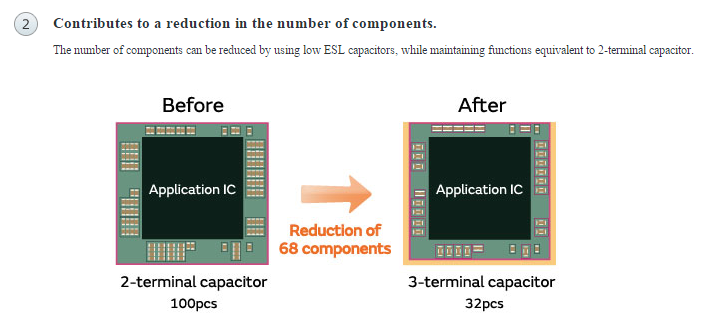The bypass capacitors are used for example to filter out noise at the power supply of an IC. Usually 2 or more capacitors are applied in parallel to cover wider range of frequencies.
However, I have learned about 3-terminal capacitors that have extremely low ESL and therefore cover much wider range of frequencies than usual by pass caps. As I see it, instead of several bypass capacitors one cold use single 3-terminal capacitor. However, since I had never seen the 3-terminal capacitors in such role, I assume there are pitfalls that I am not aware of. What are they?
And what the 3-terminal caps are used for then?

